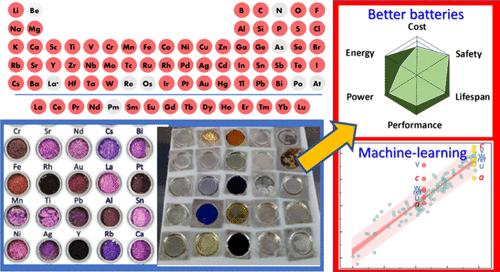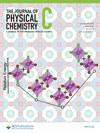勇敢面对各种元素:从电池材料中的 60 多种掺杂剂中汲取经验
IF 3.3
3区 化学
Q2 CHEMISTRY, PHYSICAL
引用次数: 0
摘要
向可再生能源的过渡促使人们对电动汽车和电网存储等重要应用领域的新型二次电池材料进行大量研究。这项研究通常非常分散,每项研究只关注几种成分,每个研究小组使用自己的方法/方案,这极大地限制了研究之间的比较。最近,人们开发了高通量方法,用于同时筛选大量掺杂剂(最新统计为 72 种不同元素)的影响。这些研究主要针对锂离子电池的电极、纳离子阴极以及锂电池和纳电池的固体电解质。这种由大量数据驱动的研究在为实用设备生产先进材料方面效率极高,但同时也为我们提供了一个绝佳的机会,让我们进一步了解替代是如何影响电池材料的各种重要内在特性的。在此,我将总结这些研究中的主要趋势,并对这一研究的发展方向进行展望。这将包括讨论在全面了解如何预测掺杂剂是否真的会掺入结构中方面取得的进展(迄今为止,计算方法对这一点的预测一直很差),以及开发共掺策略以同时优化多种关键性能的潜力。最后,还将讨论利用人工智能/机器学习来利用这些大型数据集的机会。这些都将极大地提高我们合理设计先进电池材料的能力,而不会限制开放性探索。本文章由计算机程序翻译,如有差异,请以英文原文为准。

Braving the Elements: Learning from 60+ Dopants in Battery Materials
The transition toward renewable energy sources is motivating a great deal of research into new secondary battery materials for important applications such as electric vehicles and grid storage. This research is generally very fragmented with each study only looking at a few compositions and each research team using their own methods/protocols, which greatly limits comparisons between studies. Recently, high-throughput methods have been developed and used to screen the impact of a very high number of dopants simultaneously (72 different elements at the latest count). These studies have focused on both electrodes in Li-ion batteries, Na-ion cathodes, and solid electrolytes for both Li and Na batteries. This large-data-driven research is highly efficient in generating advanced materials for practical devices, but it also provides a great opportunity to enhance our understanding of how substitutions impact the wide variety of intrinsic properties of importance for battery materials. Here, I summarize the key trends seen across these studies and provide a perspective of where this research is leading. This will include a discussion of progress toward a global understanding of how to predict whether a dopant will in fact dope into a structure (this has to date been poorly predicted by computational approaches) and also the potential to develop codoping strategies to optimize multiple key properties at once. Finally, opportunities to make use of these large data sets with artificial intelligence/machine-learning will be discussed. These will dramatically enhance our ability to rationally design advanced battery materials without limiting open exploration.
求助全文
通过发布文献求助,成功后即可免费获取论文全文。
去求助
来源期刊

The Journal of Physical Chemistry C
化学-材料科学:综合
CiteScore
6.50
自引率
8.10%
发文量
2047
审稿时长
1.8 months
期刊介绍:
The Journal of Physical Chemistry A/B/C is devoted to reporting new and original experimental and theoretical basic research of interest to physical chemists, biophysical chemists, and chemical physicists.
 求助内容:
求助内容: 应助结果提醒方式:
应助结果提醒方式:


